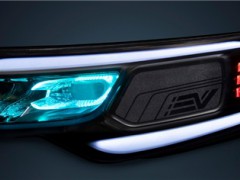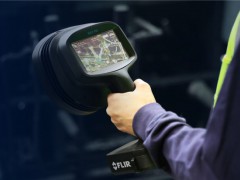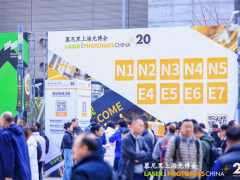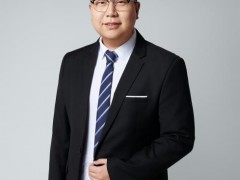???? 據能源之聲3月24日消息,日本貿易公司三菱和國有能源機構Jogmec(日本石油天然氣、金屬礦物資源機構)正與印尼生產商Panca Amara Utama (PAU)探索藍氨的潛在產量。
????三菱和Jogmec在3月19日表示,他們已與PAU和擁有CCS(碳捕集與封存)專業知識的印尼國立萬隆理工學院(banung Institute of Technology)達成協議,開展CCS可行性研究。該研究計劃在印度尼西亞中部蘇拉威西省的PAU工廠和三菱年產200萬噸的Donggi-Senoro液化天然氣出口工廠附近進行。
????PAU作為其子公司的印度尼西亞上市天然氣精煉商Surya Esa Perkasa(SEP)首席執行官Chander Vinod Laroya表示:“作為世界上最新,效率最高的制氨廠(所有者)之一,PAU處于理想的位置,可以幫助政府實現到2030年將二氧化碳排放量減少29%的目標。”
????Laroya表示,PAU 藍氨廠項目是世界上第一個“最新的氨技術應用,使印尼處于全球氨生產的前沿”。
????藍氨由天然氣等化石燃料產生,產生的二氧化碳通過碳捕集與封存進行管理。
????作為主要的天然氣生產國,印尼一直在使用氨生產化肥、塑料和化學產品。人們對氨成為下一代清潔能源的期望越來越高,因為它在燃燒過程中不會排放二氧化碳。
????三菱在另一份新聞稿中表示,PAU工廠生產的藍氨將出口到日本的燃煤電廠。三菱在新聞稿中稱:“通過這個清潔燃料氨項目,我們將努力為實現脫碳社會和確保日本穩定的能源供應做出貢獻。”
????三菱及其印尼合作伙伴SEP于2018年在合資公司PAU的氨氣工廠開始生產,年產66萬噸。該工廠使用的天然氣來自附近的Senoro和Toili氣田,三菱與韓國國有企業Kogas在這些氣田有合作。
????作為實現2050年脫碳目標的努力的一部分,日本計劃擴大氨燃料的使用,預計最早將于2025年開始進口用于燃煤電廠共燃的氨燃料。
????裘寅 編譯自 能源之聲
????原文如下:
????Japanese partners eye Indonesian blue ammonia production
????Japanese trading house Mitsubishi and state-owned energy agency Jogmec are exploring potential blue ammonia output with Indonesian producer Panca Amara Utama (PAU).
????Mitsubishi and Japan Oil, Gas and metals National Corporation (Jogmec) said on 19 March that they have agreed with PAU and Indonesia’s national Bandung Institute of Technology, which has expertise in CCS, to undertake a CCS feasibility study. The study is planned for near the PAU plant and Mitsubishi’s 2 million tonne per year Donggi-Senoro LNG export plant, both in the Indonesian province of central Sulawesi.
????“As [the owner of] one of the newest and most efficient ammonia plants in the world, PAU is ideally placed to help achieve the government’s CO2 [carbon dioxide] emissions reduction target of 29% by 2030,” chief executive Chander Vinod Laroya of Indonesian-listed gas refiner Surya Esa Perkasa (SEP), which owns PAU.
????Laroya said the PAU blue ammonia plant project was the world’s first application of the “latest ammonia technology, putting Indonesia at the forefront of global ammonia production.”
????Blue ammonia is produced from fossil fuels, such as natural gas, with the carbon dioxide (CO2) generated managed through carbon capture and storage (CCS).
????A major natural gas producer, Indonesia has been making fertilizers, plastics and chemical products using ammonia. Expectations are increasing for ammonia to become a source of next-generation clean energy, as it does not emit CO2 during combustion.
????Mitsubishi said in a separate press release that the blue ammonia produced by the PAU plant would be exported to fuel coal-fired power plants in Japan. “Through this clean fuel ammonia project, we will make an effort to contribute towards realising a decarbonised society and securing stable energy supply for Japan,” Mitsubishi said in the release.
????Mitsubishi and its Indonesian partner SEP began production at the 660,000 tonne per year PAU joint-venture ammonia plant in 2018. The plant uses natural gas from the nearby Senoro and Toili fields, in which Mitsubishi partners South Korea’s state-owned Kogas.
????Japan is aiming to expand the use of ammonia as a fuel as part of efforts to hit its 2050 decarbonisation goal, with imports forecast to begin as early as 2025 initially for co-firing at coal-fired power plants.
免責聲明:本網轉載自其它媒體的文章,目的在于弘揚石化精神,傳遞更多石化信息,并不代表本網贊同其觀點和對其真實性負責,在此我們謹向原作者和原媒體致以敬意。如果您認為本站文章侵犯了您的版權,請與我們聯系,我們將第一時間刪除。







